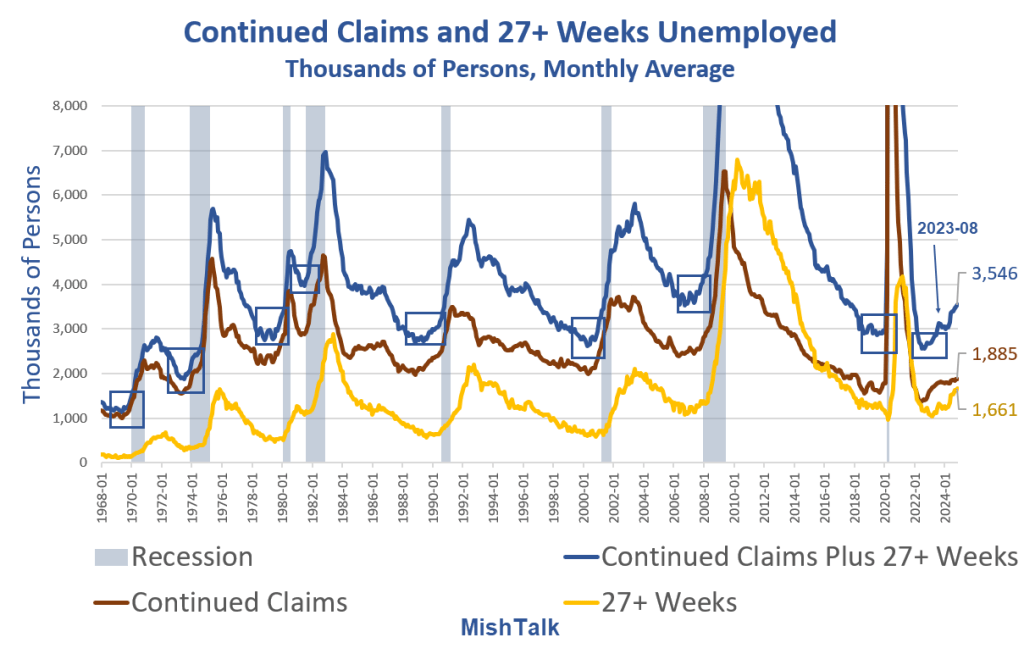Starting May of 2024, it kept getting harder to find a new job for those who lost one.

The lead chart shows the Continued Claims and the 4-week moving average of continued claims from the Department of Labor Weekly Claims Report.
Continued Claims
- The advance seasonally adjusted insured unemployment rate was 1.3 percent for the week ending December 14, an increase of 0.1 percentage point from the previous week’s unrevised rate.
- The advance number for seasonally adjusted insured unemployment during the week ending December 14 was 1,910,000, an increase of 46,000 from the previous week’s revised level. This is the highest level for insured unemployment since November 13, 2021 when it was 1,974,000.
- The previous week’s level was revised down by 10,000 from 1,874,000 to 1,864,000. The 4-week moving average was 1,881,000, an increase of 3,250 from the previous week’s revised average. The previous week’s average was revised down by 2,500 from 1,880,250 to 1,877,750.
Insured Unemployment
The key phrase above is “insured unemployment”.
After someone expires all of their unemployment benefits they become “uninsured unemployment” and the Department of Labor stops tracking.
Expiring Unemployment Benefits
- Most states offer 26 weeks of unemployment benefits.
- Many states with a maximum of 26 weeks use a sliding scale based on a worker’s earnings history to determine the maximum number of weeks they qualify
- Arkansas, Iowa, Oklahoma, South Carolina, Missouri, North Carolina, and Kentucky have a lower number of week.
- Massachusetts allows up to 30 weeks depending on conditions. Montana allows 28 weeks of benefits.
Insured unemployment generally ends at 26 weeks. To correct for expiring benefits, we need add those with expired benefits to the number of continuing claims.
Continued Claims and 27+ Weeks Unemployed

The above chart shows the impact of those who are unemployed but no longer eligible for unemployment insurance.
It’s not the level that indicates a problem, it’s the direction and strength of the move that’s the problem.
There was a brief in the surge higher that started in August of 2023. The temporary decline shows up in the lead chart as well.
From August of 2023 until April of 2024, it was easy to find a job if you lost one. That has not been the case starting May of 2024.
Recession Indicator
I created a recession indicator using a moving averages of 15-weeks or longer unemployed.
For discussion, please see Two Recession Indicators, What Do They Say Now?
